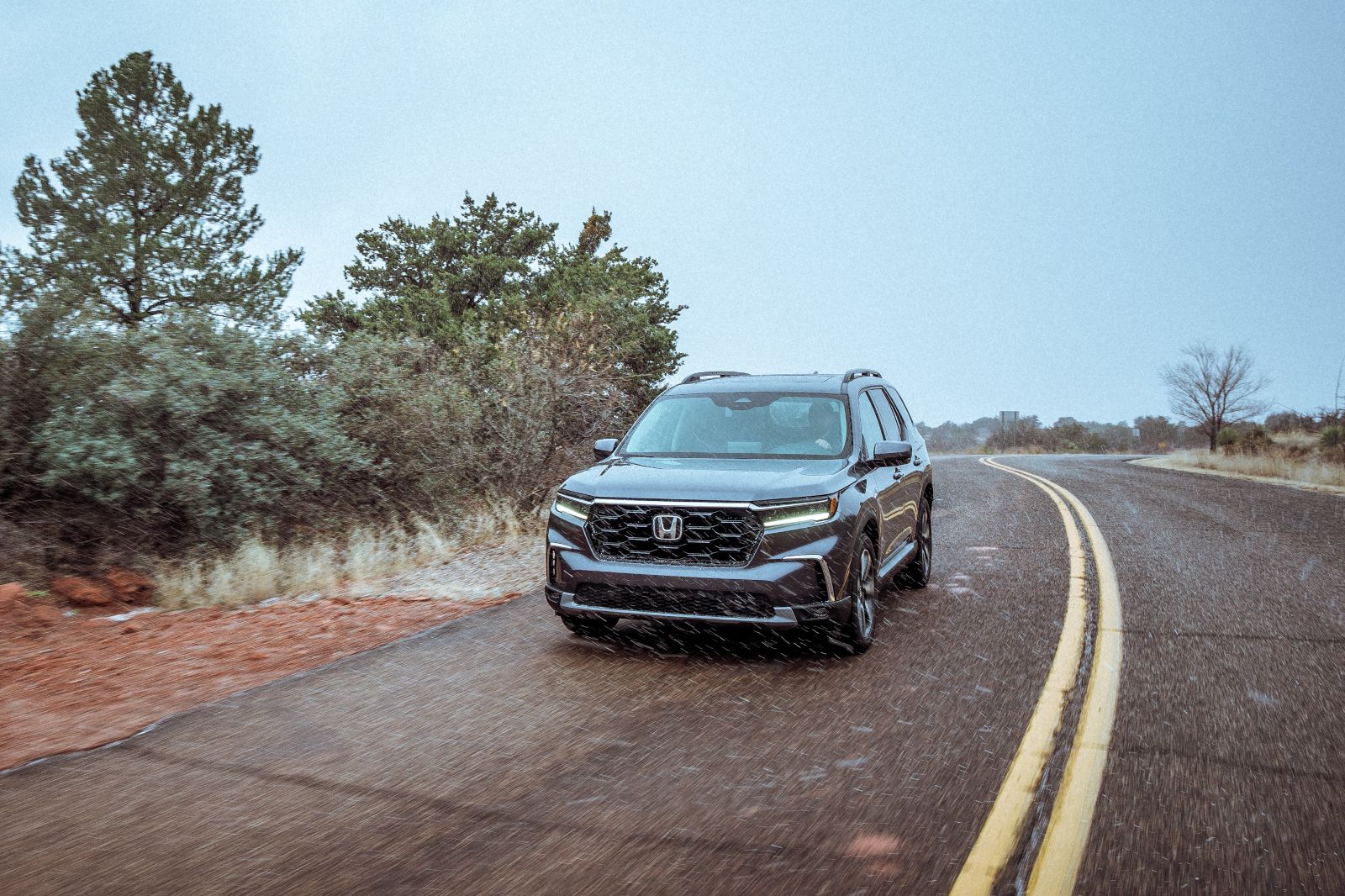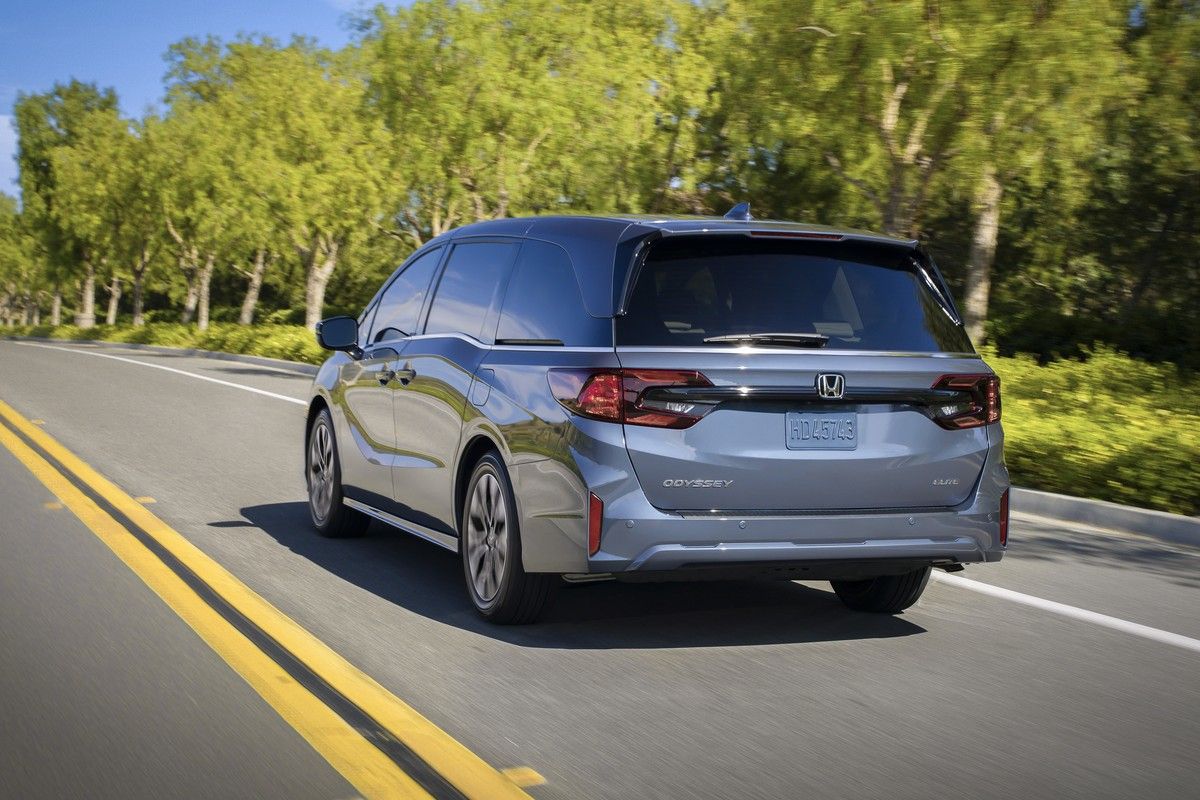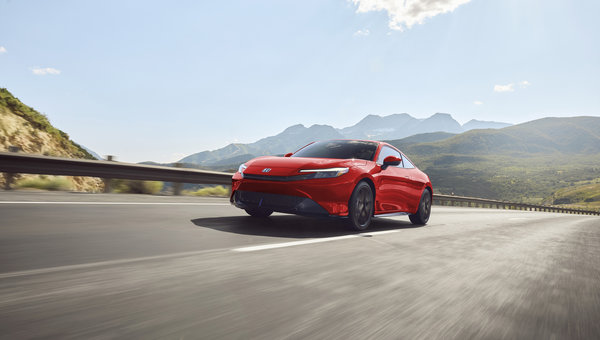Honda Sensing: The Four Features You Will Use Every Day on Highways 40/640
November 18 2025,

If you take Highway 40 or 640 every day, you know the deal: heavy traffic during rush hour, constant lane changes, long straight stretches that cause fatigue, difficulty maintaining safe distances during slowdowns, etc. The Honda Sensing safety suite turns these daily realities into banalities, safer and less stressful situations.
Honda Sensing is not just a collection of technological gadgets. It is an integrated suite of driver-assistance systems that work together to enhance your safety and reduce fatigue on your commutes between Lachenaie and Montreal.
Here are the four features you will actually use every day.
1 — Adaptive Cruise Control (ACC): Your Ally During Slowdowns
Adaptive Cruise Control with Low-Speed Follow completely changes your experience during traffic jams on the 40/640. Unlike a traditional cruise control, ACC automatically adjusts your speed to maintain a safe distance from the vehicle in front of you.
How it works in your daily life:
Imagine typical morning traffic on Highway 40 towards Montreal. You set your cruise speed to $100\text{ km/h}$. Does the vehicle ahead slow down to $80\text{ km/h}$? The ACC automatically reduces your speed. Does it accelerate? The ACC gradually resumes the set speed. Does traffic stop completely? The system brakes and brings your vehicle to a stop. When traffic resumes, a simple press of the accelerator or the RES button reactivates the system.
This feature eliminates the constant use of the accelerator and brake during slowdowns. Your legs are less tired. Your fuel consumption improves due to smoother accelerations and decelerations. Your stress level decreases.
Particularly useful:
- In daily traffic jams near interchanges.
- On the long stretches of the 640 between Lachenaie and Terrebonne.
- During Friday evening rush hours.
2 — Lane Keeping Assist System (LKAS): Less Fatigue on Long Distances
The Lane Keeping Assist System uses a camera to detect lane lines and helps keep your vehicle centered in its lane. It is not an autonomous driving system, but an assistant that significantly reduces fatigue on daily commutes.
How it works in your daily life:
On the straight, monotonous sections of Highway 40 between Repentigny and Montreal, the LKAS applies slight steering corrections to keep your vehicle centered. You keep your hands on the wheel and remain attentive, but the system does the constant work of micro-adjustments that is normally tiring. Your arms will feel better, and your concentration will improve.
The system detects if you remove your hands from the wheel for too long and issues visual and audible alerts. This ensures that you remain engaged in driving while benefiting from real assistance.
Particularly useful:
- On the long, straight sections of the 40.
- During repetitive daily commutes that reduce vigilance.
- In windy weather where the vehicle tends to drift slightly.
Bonus: Combined with Adaptive Cruise Control, the LKAS is part of the Traffic Jam Assist system, which partially manages driving in low-speed slowdowns. This is a major relief in dense morning traffic.
3 — Blind Spot Information System (BSI): Change Lanes with Confidence

The Blind Spot Information System monitors the side areas that you cannot directly see in your mirrors. In the dense and fast-moving traffic of Highways 40/640, this function quickly becomes essential.
How it works in your daily life:
When a vehicle is in your blind spot, a light indicator illuminates in the corresponding exterior mirror. If you activate your turn signal to change lanes while a vehicle is detected, the system emits a visual and audible alert to warn you of the danger.
On the 40 and 640, where vehicles constantly change lanes and traffic is often heavy, this system adds a crucial layer of safety. It is particularly valuable during fast overtakes or when you need to merge into a lane to take your exit.
Particularly useful:
- During frequent lane changes in heavy traffic.
- During rush hour when motorcyclists weave between lanes.
- For overtaking on the three-lane sections of the 40.
Complementary Feature: The Rear Cross-Traffic Monitor (CTM) uses the same sensors to alert you to vehicles approaching laterally when you are backing up. Very useful in crowded parking lots at shopping centers in Terrebonne or Repentigny.
4 — Collision Mitigation Braking System (CMBS): Your Emergency Safety Net
The Collision Mitigation Braking System with Pedestrian Detection is your last line of defense in the event of momentary distraction or a sudden emergency situation. It uses radar sensors and a camera to continuously monitor the road ahead of you.
How it works in your daily life:
The system works in three stages. First, if a potential collision is detected, you receive a visual and audible alert (Forward Collision Warning). If you do not react and the risk increases, the system prepares the brakes for maximum response. As a last resort, if a collision is imminent and you still have not reacted, the CMBS automatically applies the brakes to reduce the impact speed or completely avoid the collision.
The system also detects pedestrians. In urban areas of Montreal or near highway exits in Lachenaie, this function can prevent serious accidents.
Particularly useful:
- When the vehicle ahead suddenly brakes.
- At intersections after highway exits.
- In case of momentary distraction (changing a radio station, GPS).
Important to know: The CMBS is not designed to replace your vigilance. It is an emergency system that intervenes when everything else has failed. Always drive attentively and maintain a safe distance.
Honda Sensing: Standard on All Honda Models
The good news about what you just read? Honda Sensing is standard on all Honda vehicles sold in Canada, including the Civic, Civic Hybrid, CR-V, CR-V Hybrid, Accord Hybrid, HR-V, Passport, and Pilot models. You do not have to pay extra for these essential technologies.
These four systems (and several others) work together to create a safer and less tiring driving experience on your daily commutes. After a few days of use, you'll wonder how you ever drove without them.
Try Honda Sensing on Your Usual Route
The best way to understand how Honda Sensing improves your daily life on Highways 40/640 is to take a test drive on your own route. Stop by Lallier Honda 640 in Lachenaie and ask to test any model equipped with the Honda Sensing suite under the real conditions of your daily commute. You will quickly see the difference.



